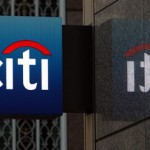High & Low Finance: Citigroup’s Settlement, Pro and Con

The punishment did not fit the crime, or at least it did not fit the crime that was charged.
Citigroup’s $7 billion settlement of charges that it sold bad mortgage securitizations is a classic example of prosecutors striking a deal that seemingly has little to do with what the bank did. The bad actions cited by the Justice Department damaged investors, but there is nothing in the settlement to benefit most of those affected.
Instead, there is a lot of money for the government and some benefits for homeowners and even prospective renters who had nothing to do with Citigroup.
In its legal papers, the Justice Department describes incident after incident in which consultants hired by Citigroup to assess the quality of mortgages that the bank planned to securitize found loans that did not come close to meeting the standards that the bank claimed to be following. In some cases, Citigroup pressed the consultants to change their views; in others, it seems to have largely ignored the reports.
But the department stops short of identifying which securitizations were affected and never bothers to say whether the securitizations with problems performed worse than others. There is no indication that officials checked to see whether the loans identified as substandard were more likely to default than those the consultants deemed to be proper. There seems to have been no effort to quantify just how much Citigroup’s improper behavior cost investors.
Citigroup was hardly the largest, or the worst, purveyor of bad mortgage securitizations. A financial crisis would have happened even if Citigroup and other banks that put together securitizations had acted far more responsibly than they did.
It took an entire financial system to produce the crisis, with the assistance of somnolent regulators and a widespread belief that house prices could only rise — and therefore anyone who did not own a house was missing out on a sure thing. It also required many people to look the other way, among them the credit rating agencies whose models were overly optimistic, the bond insurers that guaranteed securities without bothering to check the actual loans behind them and the institutional investors that bought securities without doing any research.
And yet, there is a sense in which Citigroup’s punishment seems reasonable. Many of those most responsible for the worst abuses are long gone or simply untraceable. That includes the mortgage companies that failed early in the crisis and the loan officers and borrowers who lied to get loans approved.
The big banks are the survivors of a crisis that they helped to create, and they survived in part because the government chose to bail them out. The direct cost to the government of those bailouts may have been recovered, but the indirect costs — in the form of lost tax revenue and increased spending on the social safety net — are still enormous. The big banks are now doing reasonably well, and the effect of settlements like this one can be seen as providing partial reimbursement of those indirect costs.
One of the lasting effects of the crisis is that many securitizations out there will still be in operation for years to come and those who manage them will have to decide whether and when to modify mortgages or foreclose on homes.
So this presents an opportunity to look at one such deal to see how it is faring years after it became clear that many bad loans had been made.
The legal papers mention seven 2006 securitizations, but do not say which of them were among the three that the prosecutors say involved improper actions by the bank. I chose the Citigroup Mortgage Loan Trust 2006-AR3, in part because it was far from the worst of them.
All the loans were first mortgages, not home equity loans, as in some of the other deals. It had six different groups of loans in it, with some tranches secured by one group of loans and others by as many as four.
As in all mortgage securitizations, there were junior securities that would have to be wiped out before losses spread to the securities above them, a fact that gave comfort to those with more senior securities.
With the benefit of hindsight, it seems clear that no one involved in buying or rating these securities thought they posed any real risk. Fitch concluded that securities representing 99 percent of the $1.8 billion raised were investment grade — and 94 percent of them were AAA. Moody’s was a little more conservative. It rated only 89 percent of the certificates as Aaa, its best grade, although most of the rest were Aa1, just one notch below and a very high rating.
Moody’s was not retained to rate some of the securities that Fitch thought were investment grade, which could have been a sign that it was unwilling to give them high ratings. Because the underwriter — Citigroup — decided which rating agencies would be hired, the agencies had a clear incentive to be generous. An agency that was too critical might not get any business.
And how did the securitization do? It took less than three years for the certificates rated BBB by Fitch — a low investment-grade rating — to begin to suffer losses as mortgages went into default, and less than four years for them to be wiped out. It took less than six years for the securities rated AA by Fitch to become worthless.
Some value still exists in the certificates that began with higher ratings. Nearly half of the amount invested in securities rated Aa1 by Moody’s and AAA by Fitch has been wiped out, but over all only 4 percent of the money invested in the securities deemed triple-A by both firms has been lost. (Losses on those securities range from 1 percent to 14 percent, depending on the groups of loans backing them.) Investors who bought the safest securities might still end up with profits from interest payments that exceed the capital losses — although that is not a sure thing. They certainly would have done better to buy Treasury bonds.
Looking at the various groups of mortgages allows some tentative conclusions regarding which were more likely to work out. Loans made by Wells Fargo dominated two of the groups, and they seem to have performed better than the others. But some of the groups had heavy concentrations of loans from far less responsible mortgage companies.
The worst-performing of the six groups of loans — with losses so far equaling almost a quarter of the money lent — had a heavy concentration of loans to borrowers who had virtually no equity in their homes. Most of those loans also required only the payment of interest for the first several years. Some of these borrowers no doubt chose to walk away when prices fell.
Yet none of those factors seemed important when the securitization was sold. The initial interest rates on the tranches ranged from 5.7 to 6.3 percent. At the time, 10-year Treasury notes were yielding 5.1 percent. It was not much of a premium, but people were confident there was no risk. That was, after all, what triple-A was supposed to mean.
The banks have paid tens of billions of dollars to put this mess behind them, and no doubt their bosses have many regrets. But I doubt they really believe they did anything illegal, or at least think they had no real choice at the time. It was telling that in settlement negotiations Citigroup argued that its fine should be based on its low market share in the securitization market, not on any evaluation of what it actually did.
And it may well be true that actions like Citigroup’s were necessary for any bank that wanted to stay in what then appeared to be a highly profitable business. Imagine for a minute what would have happened in 2006 if Citigroup had listened to its consultants and canceled the offerings. To the mortgage companies making the loans, that might have simply marked Citigroup as uncooperative. The business would have gone to less scrupulous competitors.
Many years ago, a promoter who was trying to justify selling some bad investments explained his actions by saying, in effect, “Sometimes you just have to sell what they want to buy.”
By FLOYD NORRIS
Source: NYT





























